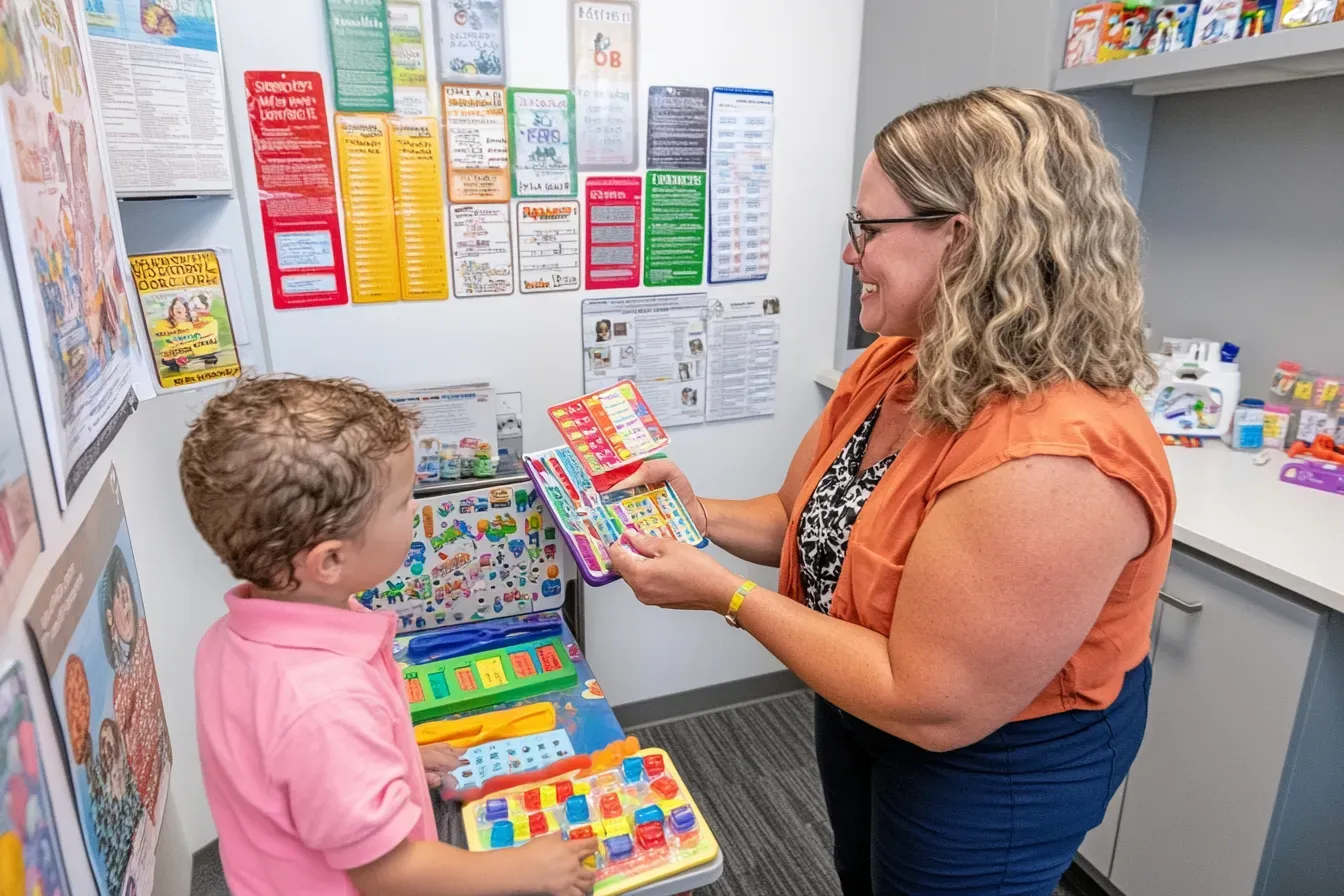How To Get A Full-Ride Scholarship for 2026
Amid rising costs and ballooning debts, paying for higher education heavily looms over many students. According to CNN, almost $144 billion of student loan debt has been forgiven since the Biden administration clocked in (Lobosco & Choi, 2024). However, with obstacles to a broader forgiveness program, the financial burden of higher education remains a pressing issue.
A full-ride scholarship can provide a full solution, offering comprehensive tuition and fees coverage. As a career planner with over a decade of experience, I've witnessed numerous success stories of alumni who have secured full scholarships. Although rare, it can eliminate financial worries and help students focus on learning. With the right resources and support, you can access this financial aid and secure the funding you need to obtain a degree.
Therefore, in this guide, I will discuss the intricacies of full-ride scholarships, exploring their types, differences with other scholarships, and eligibility criteria. I’ll also provide essential tips to help you increase your chances of bagging this esteemed financial assistance.
What are the benefits of getting a full-ride scholarship?
- Securing a full-ride scholarship covers all educational expenses, including tuition and fees, effectively eliminating the need for student loans and debt. The average student debt is $37,338 (Hanson, 2023), so a full scholarship provides significant financial relief to students.
- In some cases, full-ride scholarships also provide access to study-abroad programs, internships, and extracurricular activities—experiences that might otherwise be unaffordable or costly.
- In addition, it recognizes and rewards students’ hard work, talent, and achievements, boosting their confidence and adding a prestigious accolade to their resumes.
Table of Contents:
- What is a full-ride scholarship?
- How does a full-ride scholarship differ from other scholarships?
- How much can I receive with a full-ride scholarship?
- What are the different types of full-ride scholarships?
- What are the qualifications to get a full-ride scholarship?
- Where can I find full-ride scholarships?
- How can I increase my chances of getting a full-ride scholarship?
- How can financial planning support your scholarship or loan decisions?
- What can I expect after being awarded a full-ride scholarship?
- How can a full-ride scholarship boost my career prospects?
- How does a full-ride scholarship impact the decision to pursue advanced degrees?
- Can full-ride scholarships support vocational and trade career paths?
- What happens if I lose my full-ride scholarship?
- What are the alternatives if I don’t get a full-ride scholarship?
- Why do universities and colleges offer full-ride scholarships?
- Are full-ride scholarships applicable to online degree programs?
- Can full-ride scholarships be applied to online accelerated bachelor's degree programs?
- How do student loans compare to full-ride scholarships?
- How can a full-ride scholarship accelerate my academic timeline?
- Are there any tax implications of full-ride scholarships?
- What Are the Potential Downsides of Accepting a Full-Ride Scholarship?
- Other Things You Should Know About Full-Ride Scholarships
What is a full-ride scholarship?
A full-ride scholarship is an award that covers the entire cost of attending college. Depending on the type and the institution offering it, this comprehensive financial package includes assistance with the following:
- Total tuition
- Academic and miscellaneous fees
- Room, boarding, and meals
- Textbooks and supplies
- Internships and study-abroad programs
- Personal or travel expenses
Also called a full scholarship, it offers a host of other benefits that enrich experiences. These highly competitive and prestigious scholarships can be considered a dream of many students aspiring to go to college or attend graduate studies. Overall, a full-ride scholarship aims to alleviate all financial burdens associated with attending higher education, allowing students to focus entirely on their academic and extracurricular pursuits.
How does a full-ride scholarship differ from other scholarships?
According to the Education Data Initiative (Hanson, 2024), more than 1.7 million scholarships are awarded each year. Because a scholarship does not have to be repaid, it remains a popular choice among learners. After knowing what is a full ride scholarship, you might wonder how it stands out from other scholarships.
For instance, a full-ride scholarship vs. a full-tuition scholarship varies in coverage. As its name suggests, the latter is limited to covering only the cost of tuition, leaving students responsible for other expenses. Partial scholarships only cover a percentage of tuition, while others are designated for particular expenses, such as books or housing, but do not address the total cost of attendance. This doesn’t imply that these scholarships are not helpful; instead, they should be complemented with additional financial aid to cover your entire cost of attendance.
Full-ride scholarships also often combine various qualifications, broadening the range of applicants. However, this makes the selection process exclusive, as these scholarships are intended for the most outstanding candidates. Meanwhile, other scholarships might focus on a single criterion, such as academic merit or financial need.
Lastly, full-ride scholarships may offer additional perks. Depending on the type they get, recipients could gain access to top-performing academic programs, mentorship opportunities, networking events, and a supportive community of scholars and alumni.

How much can I receive with a full-ride scholarship?
Generally, a full-ride scholarship covers the entire cost of attending college and other fees. This can range from $20,000 to $60,000, but specific amounts vary per institution.
Based on the latest data from the National Center for Education Statistics (NCES, 2023), the average total cost of attendance in public institutions for on-campus students was $27,146.
In private non-profit institutions, the average total cost of attendance on-campus was more than double, at $58,628. The table below details the differences in costs. With a full scholarship, you can expect that it shoulders a variation of these figures.
In some cases, full-ride scholarships also include stipends for personal expenses or travel costs associated with educational pursuits. This comprehensive coverage ensures that students do not need to pay out-of-pocket or rely on student loans to finance their education.
What are the different types of full-ride scholarships?
Before applying for a full-ride scholarship, you must know its types to determine which suits your skills and needs. By understanding these distinctions, you can strategically prepare your application and highlight your unique qualifications.
- Academic/Merit Scholarships: These are awarded to students with stellar academic achievements, such as high GPAs or test scores (SAT/ACT), who demonstrate intellectual curiosity and dedication to their studies.
- Athletic Scholarships: These are granted to student-athletes who excel in sports and show potential to contribute significantly to a college or university’s athletic programs. Students typically require a consistent athletic record and endorsements from coaches.
- Leadership/Prestige Scholarships: These recognize individuals who have held significant roles in school clubs, organizations, community service projects, or other extracurricular activities. Students must demonstrate commitment to help others or exhibit strong leadership skills and initiative.
- Artistic Scholarships: These scholarships are offered to students with exceptional talent in the arts, including visual arts, performing arts, creative writing, and film.
- Other Scholarships: Other types of full-ride scholarships cater to racial or ethnic minorities, students with disabilities, and LGBTQ+ students. Some scholarships also offer full cost of attendance coverage to students with distinct financial needs.
What are the qualifications to get a full-ride scholarship?
Qualifications for obtaining a full-ride scholarship can vary widely depending on the type of scholarship and the sponsoring institution. Generally, this financial aid is open to incoming undergraduate students, transfer or returning students, and graduate or professional students. They typically need to meet the following criteria:
- Minimum GPA of 3.5 or higher on a 4.0 scale
- Taking honors or Advanced Placement (AP) classes
- Excellent SAT/ACT or GRE/GMAT scores
- Profound research and writing skills (especially for graduate students)
- Strong athletic skills with proven track records
- Well-put portfolio or creative audition
- Recognitions for academic, artistic, or leadership achievement
- Leadership positions in school organizations
- Community service involvement
- Financial need (depends on type)
- Heritage (for diversity scholarships)
Where can I find full-ride scholarships?
According to College Raptor, only 0.1% of students are offered full-ride scholarships (Wignall, 2022), making it an exceptionally competitive form of financial assistance. Because a full-ride scholarship is so rare, you might need to do some digging on various online and offline resources. Here are some key places where you can discover full-ride scholarship opportunities:
- College and University Websites: It is more common for colleges and universities to offer full-rides than other institutions. A quick search on your desired school’s financial assistance webpage can tell you the types of scholarships it offers, with detailed eligibility requirements and application instructions.
- Scholarship Databases: Utilize reputable scholarship search engines to filter scholarships from various sources, including colleges, universities, corporations, foundations, and nonprofit organizations.
- Government, Private, and Nonprofit Organizations: The USDA 1890 National Scholars Program, The Gates Scholarship, and Quest Bridge are just a few initiatives from the government, private companies, and nonprofits that offer full-ride scholarships. Consider searching for scholarships from big brands, corporations, or local state agencies, as they often have dedicated funds to support students pursuing higher education.
- National Competitions: Some competitions, like the National Merit Scholarship Program, aim to identify and support the most promising young minds across the country through either full or partial scholarships.
- Alumni and Professional Associations: Some religious institutions, professional associations, and cultural groups sponsor scholarships to support local students pursuing higher education. Alumni networks can also connect you with valuable opportunities and offer advice.
By leveraging these resources and conducting thorough research, you can identify a range of full-ride scholarship opportunities that align with your academic achievements, personal background, and aspirations.

How can I increase my chances of getting a full-ride scholarship?
Securing a full-ride scholarship is a challenging process, but with the right approach, you can significantly improve your chances. After comparing academic sources, I’ve compiled the steps on how to get a full-ride scholarship.
- Research early. Begin researching scholarships as early as possible, ideally during your junior year of high school, to give you ample time to prepare.
- Prepare academically. Try to maintain a high GPA by doing well in school and consider taking high-level courses.
- Develop an extracurricular profile. Try out for clubs, volunteer in your community, or take leadership roles to demonstrate a commitment to service and social impact.
- Gather strong recommendations. Select teachers, coaches, or mentors who know you well and can write convincing letters of recommendation.
- Craft a compelling personal statement. Write a personal statement that highlights your background, achievements, talents, unique insights, and aspirations.
- Prepare for interviews. If the scholarship requires an interview, practice answering common questions about your background, goals, and why you deserve the scholarship. Be confident and clearly articulate yourself.
- Stay organized. Carefully follow all application instructions and keep track of deadlines and updates.
- Seek feedback. Ask for assistance from guidance counselors or teachers. They can provide additional resources to help you improve or introduce you to past scholars and other key figures who can guide you through this process.
In a Fidelity survey (2023), six in 10 high schoolers know they won’t be able to pay for college without student loans, yet 36% are uncertain how long it would take to repay them. For students who wish to avoid being burdened by debt, pursuing a full-ride scholarship, despite its limited availability, is worth taking the risk.

How can financial planning support your scholarship or loan decisions?
Financial planning plays a critical role in optimizing your higher education investment, whether you're pursuing a full-ride scholarship or considering alternative funding options like student loans. A robust financial plan helps you evaluate your long-term goals, current resources, and potential obligations, ensuring you make informed decisions that align with your career aspirations.
For scholarship recipients, financial planning can help maximize the benefits of their award. While a full-ride scholarship covers major educational expenses, recipients should still create budgets for incidental costs, such as personal expenses or extracurricular activities. By managing funds wisely, students can avoid overspending and use any additional stipends or savings effectively.
Conversely, students exploring loans must carefully assess the financial impact of debt on their future. This includes understanding interest rates, repayment plans, and whether a cosigner is required for certain private loans. For more information on this topic, visit cosigner student loan to learn how cosigners affect loan eligibility and repayment terms. Proper research and planning can prevent financial surprises and help you choose the most suitable loan option.
Incorporating financial literacy into your higher education journey provides clarity and confidence, regardless of whether you secure a scholarship or rely on a loan. Understanding your financial landscape and planning proactively sets the stage for a stable future.
What can I expect after being awarded a full-ride scholarship?
If you’re fortunate enough to receive a full-ride scholarship, you can anticipate significant benefits throughout your studies. Naturally, your tuition, fees, room, boarding, and other expenses will be covered, giving you time to focus on your studies. Apart from that, here are some things you can expect as a scholar:
- Academic and Extracurricular Expectations: Be prepared to meet specific academic requirements, such as maintaining a certain GPA or athletic performance and participating in other school programs to retain your scholarship.
- Enhanced Opportunities: Take advantage of unique opportunities that often accompany full-ride scholarships, including access to internships, research projects, and leadership development initiatives.
- Networking and Mentorship: Engage with a network of fellow scholars, alumni, and professionals through events and programs designed to help you build valuable relationships and gain insights into your field of study and future career paths.
- Community Involvement: Participate in community service or campus activities as required or encouraged by your scholarship program to not only meet the criteria but also immerse yourself in practical experiences.
- Ongoing Support: Utilize academic and personal support services, such as counseling, workshops, and mentorship, to help you navigate any challenges and maximize your college experience.
- Career Preparation: Prepare for future career opportunities by leveraging the resources associated with your full-ride scholarship. This may include accessing career counseling, job placement services, alumni reunions, and networking events that can help you advance professionally.
- Responsibility and Representation: Represent your scholarship program positively by maintaining academic or extracurricular excellence, contributing to your community, and embodying the values and mission of the scholarship. Your success and conduct reflect on the program and its sponsors.
How can a full-ride scholarship boost my career prospects?
A full-ride scholarship not only alleviates financial burdens but also serves as a mark of academic and personal excellence that can enhance professional credibility. Recipients often gain access to exclusive academic programs, leadership training, and specialized networking events that connect them with influential industry professionals and alumni mentors. These opportunities can lead to advanced internships and research projects, laying a strong foundation for accelerated career advancement. Additionally, the recognition associated with this type of scholarship may prove attractive to future employers, positioning graduates to negotiate better starting salaries and roles. For candidates evaluating alternative advancement routes, considering fast online degrees might offer a flexible pathway toward quick entry into competitive fields.
How does a full-ride scholarship impact the decision to pursue advanced degrees?
The comprehensive financial relief provided by a full-ride scholarship can influence long-term academic planning by allowing students to focus on their undergraduate studies free from debt. Reduced financial constraints may lead recipients to consider graduate programs, as they are more likely to seek further specialization and research opportunities without the burden of past educational expenses. This pathway is especially significant when evaluating the cost of PhD in education, as lower undergraduate financial liabilities can facilitate a smoother transition to advanced studies. Additionally, access to exclusive academic networks and resources can enhance opportunities for securing additional funding for postgraduate education.
Can full-ride scholarships support vocational and trade career paths?
While full-ride scholarships are predominantly associated with academic disciplines, certain institutions and organizations extend these awards to students with vocational interests. These specialized scholarships can complement hands-on training and targeted education, allowing recipients to enter high-demand skilled fields. For example, evaluating opportunities in trade jobs for women may provide valuable insights into alternative career pathways that combine technical expertise with formal education. This approach not only mitigates financial burdens but also ensures comprehensive support—ranging from career counseling to industry-specific training—that aligns with the evolving demands of today’s workforce.
What happens if I lose my full-ride scholarship?
In rare instances, a decline in academic performance or an inability to meet ongoing eligibility criteria may result in the loss of a full-ride scholarship. Immediate action is essential: consult your financial aid office, review the scholarship agreement for reinstatement opportunities, and promptly devise a contingency funding plan. Such a plan might include reallocating personal funds, securing part-time employment, or exploring additional financial support options, including private student loans for past due balances. Proactive communication with academic advisors and financial aid counselors can help mitigate the impact of this setback on your educational journey.
What are the alternatives if I don’t get a full-ride scholarship?
Due to the highly coveted nature of a full-ride scholarship, you must be open to the possibility that you might not obtain it. Therefore, I strongly recommend applying for other scholarships and financial aid. Considering how much has college tuition increased, you’re going to need all the help you can get to minimize costs and expenses. Here are alternative sources of financial support based on my in-depth research:
- Other Scholarships: Other scholarships may be merit—or need-based or cater to specific demographics or academic disciplines. They are usually offered by universities, private or nonprofit organizations, or foundations.
- Accelerated Programs: As an alternative, students sometimes look for accelerated program offerings that combine bachelor’s and master’s or doctoral degree studies within five or six years. Some institutions also offer master’s to doctoral accelerated programs. This shortens the time to finish your degree and reduces the total cost of your education.
- Federal Student Loans: These programs allow you to borrow money from the U.S. Department of Education to pay for either a portion of your tuition or the cost of attendance. Federal loans generally have low interest rates and favorable repayment terms.
- Work-Study Options: These provide part-time employment for students to help them cover educational expenses. They may be funded by the federal government or administered by colleges and universities.
- Assistantships or Fellowships: Assistantships involve teaching, research, or administrative duties in exchange for a stipend, tuition waiver, and sometimes health insurance benefits. Fellowships are similar but are often awarded to graduate students based on academic achievement, research potential, or contributions to a specific field.
- Tuition Reimbursement: Offered by employers, this program aims to support employees’ pursuit of higher education related to their job or career advancement.
- Federal or Private Grants: Federal and private grants are awarded by the government, schools, or private entities. These do not require repayment and are typically given based on financial need, academic merit, or other specific criteria. In 2022, institutional grants and federal loans were the most sought-after type of undergraduate aid, providing 34% and 25% of aid, respectively (Ma & Pender, 2023). The chart below provides a more detailed insight into the total undergraduate aid by type, based on the College Board’s report.
Why do universities and colleges offer full-ride scholarships?
Higher educational institutions offer a full-ride scholarship to attract top-tier students who can enhance their academic reputation. In doing so, they can compete with other colleges to recruit the best and brightest students. These students often become leaders and high achievers who enhance the university’s prestige and set high standards for their peers.
Another reason is to promote diversity and inclusion within the student body. Full-ride scholarships provide opportunities for students from various socioeconomic backgrounds, ethnicities, and geographical areas. This diversity enriches campus life, fosters a broader range of perspectives in the classroom, and prepares students for success in a globalized world.
Furthermore, full-ride scholarships can improve retention and graduation rates. Students who receive full scholarships are more likely to remain enrolled, stay engaged in campus life, and graduate on time, contributing to higher institutional success metrics.
Lastly, universities and colleges use full-ride scholarships as a tool for community engagement and support. These scholarships can be targeted to students who have shown exceptional service, leadership, or community involvement. By supporting these students, institutions invest in future leaders, build strong relationships with local communities, and demonstrate their commitment to social responsibility.
Are full-ride scholarships applicable to online degree programs?
Increasingly, online education is emerging as a compelling alternative for non-traditional learners and working professionals. While traditional full-ride scholarships have predominantly targeted on-campus pathways, some institutions and private organizations now extend comprehensive awards to candidates enrolled in accredited online programs. Applicants should carefully verify scholarship criteria to confirm that their chosen digital course of study qualifies. Additionally, evaluating program quality—such as accreditation, student support, and institutional reputation—is vital in ensuring a robust academic experience. For guidance on exploring cost-effective options, consider the most affordable online degree programs. This strategic approach enables prospective scholars to align financial aid opportunities with their evolving educational needs.
Can full-ride scholarships be applied to online accelerated bachelor's degree programs?
Full-ride scholarships are increasingly extending their scope to support innovative educational models, including accelerated online pathways. Some scholarship providers now include eligibility for candidates pursuing an online accelerated bachelor's degree, provided that the program meets specific accreditation and support requirements. Applicants should carefully review the scholarship guidelines to ensure that the virtual delivery format and condensed curriculum are recognized, aligning with both academic objectives and financial aid stipulations.
How do student loans compare to full-ride scholarships?
While full-ride scholarships provide unmatched financial relief by covering tuition and other costs, not every student secures this opportunity due to its highly competitive nature. For many, student loans become the fallback option to bridge the gap in funding their higher education. However, understanding the difference between these options is critical to making informed financial decisions.
One significant advantage of full-ride scholarships is that they eliminate the burden of repayment, enabling students to focus entirely on academics instead of juggling the stress of future debt. In contrast, student loans—whether federal or private—require repayment over time, often with interest, which could add to the total cost of education. Choosing between fixed rate student loans and variable-rate loans is one of the key decisions borrowers face. Fixed rate student loans, for instance, provide predictable monthly payments, which can be helpful for long-term financial planning.
Another aspect to consider is the flexibility of funding. Full-ride scholarships are typically tied to strict eligibility criteria and performance standards, meaning recipients must maintain a certain GPA or fulfill specific obligations. Student loans, while lacking this limitation, do not offer the comprehensive financial and experiential benefits that come with full-ride scholarships, such as networking opportunities or access to exclusive academic programs.
Ultimately, while full-ride scholarships are the ideal path to a debt-free education, student loans remain a vital alternative for those who do not qualify for such elite financial aid packages. Both options serve distinct purposes and should be evaluated based on an individual's financial circumstances and academic goals.
How can a full-ride scholarship accelerate my academic timeline?
Full-ride scholarships not only relieve financial burdens but also empower recipients to pursue accelerated academic pathways. With focused resources and flexible scheduling, students can enroll in intensive or condensed programs that reduce the overall duration of their studies. Institutions may offer innovative tracks—including dual enrollment or summer session options—enabling scholars to fast-track essential coursework and integrate practical learning experiences. For example, some beneficiaries opt to get the quickest way to get associate's degree to expedite their transition into the workforce.
Are there any tax implications of full-ride scholarships?
While scholarship funds used for qualifying educational expenses—such as tuition, fees, and required course materials—are generally tax-free, amounts allocated for non-qualified expenses, like room and board or travel, may become taxable income. Recipients should maintain detailed records and consider consulting a tax professional to ensure full compliance with IRS regulations. Recognizing these tax considerations is essential for effective financial planning, especially when evaluating additional funding options such as federal loans for flight school, which come with clearly defined terms and repayment structures.
What Are the Potential Downsides of Accepting a Full-Ride Scholarship?
While full-ride scholarships offer substantial financial relief, they can also impose strict performance and participation requirements. Recipients may experience increased pressure to maintain high academic standards, limiting flexibility in course selection or pursuing extracurricular opportunities. In some cases, the structured commitment can restrict the freedom to explore alternative academic or research interests, potentially impacting creative and personal development. Moreover, unforeseen circumstances may necessitate supplemental funding, which could become critical if scholarship support is compromised. For instances where additional financing is needed on short notice, consider an urgent student loan as a temporary measure.
Key Findings
- More than 1.7 million scholarships are awarded each year.
- Only 0.1% of students are offered full-ride scholarships.
- With a full-ride scholarship, expect that the total cost of attendance will be covered. On average, this amount is $27,146 in public institutions and $58,628 in private non-profit institutions.
- Six in 10 high schoolers know they won’t be able to pay for college without student loans, yet 36% are uncertain how long it would take to repay them.
- In 2022, institutional grants and federal loans were the most sought-after type of undergraduate aid, providing 34% and 25% of aid, respectively.
Other Things You Should Know About Full-Ride Scholarships
Can international students get a full ride?
Yes, international students can potentially receive full-ride scholarships in the U.S., but availability varies, especially since the chances are slim. However, some universities and private organizations offer full scholarships specifically to attract top international talent.
Are full-ride scholarships only available for certain majors?
Full-ride scholarships are not limited to specific majors but can vary by institution and scholarship provider. While some scholarships may target certain disciplines, such as STEM, arts, or business, others are open to students pursuing any field of study.
Is it easy to get 100% scholarship in the USA?
Students might find it difficult to secure a full-ride scholarship in the USA since it is highly selective. Students must demonstrate exceptional abilities, meet stringent eligibility criteria, and often face stiff competition from other qualified applicants. However, with thorough research, strategic planning, and dedication to academic excellence and community involvement, students can increase their chances of obtaining a full-ride scholarship.
References:
- Hanson, M. (2023, May 22). Average student loan debt. Education Data Initiative. https://educationdata.org/average-student-loan-debt
- Hanson, M. (2024, January 14). Scholarship statistics. Education Data Initiative. https://educationdata.org/scholarship-statistics
- Lobosco, K., & Choi, A. (2024, March 29). See how much student loan debt Biden has canceled. CNN. https://edition.cnn.com/2024/03/07/politics/student-loan-debt-forgiveness-biden/index.html
- Ma, J., & Pender, M. (2023). Trends in college pricing and student aid 2023. College Board. https://research.collegeboard.org/media/pdf/Trends%20Report%202023%20Updated.pdf
- National Center for Education Statistics. (2023, October). Average total cost of attendance for first-time, full-time degree/certificate-seeking undergraduate students in degree-granting postsecondary institutions, by control and level of institution, living arrangement, and component of student costs: Selected academic years, 2010-11 through 2022-23. Digest for Education Statistics. https://nces.ed.gov/programs/digest/d23/tables/dt23_330.40.asp
- Wignall, A. (2022, December 22). What’s the Difference Between a Full-Ride and a Full-Tuition Scholarship? https://www.collegeraptor.com/paying-for-college/articles/questions-answers/whats-difference-full-ride-full-tuition-scholarship


































